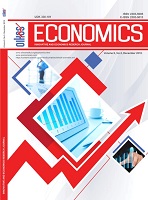Innovative Policy Reforms for Sustainable Development: Empirical Evidence From PICs
Innovative Policy Reforms for Sustainable Development: Empirical Evidence From PICs
Author(s): Ranasinghe M.W AmaradasaSubject(s): Business Economy / Management, Developing nations, Economic development, ICT Information and Communications Technologies
Published by: Oikos institut-Istraživački centar Bijeljina
Keywords: sustainable development; Pacific Island Countries; Innovations in small developing nations;
Summary/Abstract: The science and technology capabilities inculcate economic growth in a country through various processes engaged with absorption and utilization of existing knowledge, and creation of new knowledge. The Pacific Island Countries consisted of many small developing island nations naturally have limited S&T capabilities and narrow development agenda. The present study explores how different island nations in the Pacific configure themselves and design development initiatives in the global economy. Recent policy initiatives, S&T establishments and innovative approaches in PICs are visited to derive reasonable conclusive remarks. The analysis disclose existence of focussed but partially fragmented move towards sustainable development rather than driving the economy for generating a competitive edge in the business world. The fabric of the economic growth in small developing nations is naturally blended with the social and cultural interests and hence innovations across specific segments of economic sectors are chosen based on their capabilities and access to resources. Hence, the evidence reimpose that fact that the small developing nations, in particularly the PICs, select the path of development to generate the competitive advantage in the global market, while emphasizing sustainability as a priority.
Journal: ECONOMICS-INNOVATIVE AND ECONOMICS RESEARCH JOURNAL
- Issue Year: 6/2018
- Issue No: 2
- Page Range: 79-85
- Page Count: 7
- Language: English

